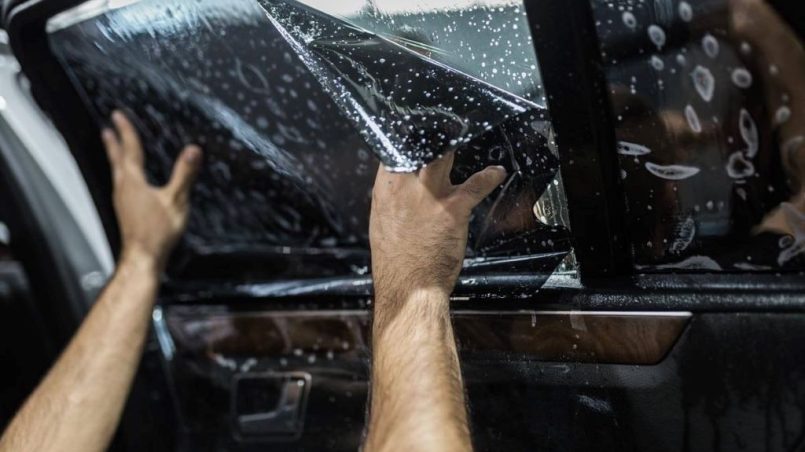Key Takeaways
- Understanding the benefits and science behind automotive glass tinting can enhance vehicle comfort, safety, and aesthetics.
- Automotive glass tinting involves more than just aesthetics; it provides UV protection, heat control, and enhanced security.
- Different tinting materials serve various purposes, from reducing glare to strengthening the glass.
- State laws and regulations about automotive tinting vary, affecting the choices available to vehicle owners.
- Staying informed and selecting the right tint can lead to a better driving experience and increased vehicle lifespan.
Automotive glass tinting is a popular vehicle enhancement, offering benefits beyond aesthetics. Tinting improves driver comfort and protects interior materials from fading by reducing glare and blocking harmful UV rays. Additionally, it enhances privacy and can even strengthen glass, adding a layer of security. Different types of tint films are available, with varying levels of heat rejection and clarity, making it essential for car owners to choose the right one based on their needs. As car care becomes more advanced, many owners pair tinting with other protective treatments to preserve their vehicle’s condition. For example, ceramic coating for cars in Katy, TX offers a durable, hydrophobic layer that complements window tinting by safeguarding the paint against contaminants and harsh weather conditions. This combination enhances the vehicle’s appearance and extends its overall longevity.
How Automotive Tinting Works
Automotive tinting consists of affixing a slim, sturdy film to the inside of a vehicle’s windows to minimize glare, shield against harmful UV rays, and enhance overall comfort. The process starts with meticulously cleaning the glass to ensure a flawless application, followed by precisely cutting and fitting the film to each window. Once applied, the film is smoothed to remove air bubbles or imperfections, creating a clean, professional look. Beyond style, window tinting helps protect the vehicle’s interior from fading and heat damage. To take that protection further, many drivers also search for automotive ceramic coating near me to safeguard their car’s exterior against scratches, oxidation, and environmental wear. Together, these treatments offer long-lasting defense and keep vehicles looking their best.
Types of Tinting Materials
Dyed Film
The dyed film operates primarily to diminish glare and augment privacy within a vehicle. By absorbing solar heat, dyed film ensures cooler car interiors, contributing significantly to the comfort of the passengers. Its basic technology makes it an accessible option for drivers looking to improve their vehicle’s environmental performance without investing heavily.
Metallized Film
The metallic particles embedded in the metalized film reflect sunlight, reducing heat and improving the vehicle’s efficiency. Despite enhancing the car’s appearance with a subtle shine, metalized films offer advantages such as increased glass strength and reduced potential for window shattering, making them a choice for safety-conscious drivers.
Carbon Film
Carbon films present a viable solution for those seeking robust protection without a reflective sheen. These non-reflective tints are characterized by superior UV protection, further helping to maintain cooler vehicle temperatures. The aesthetic appeal of carbon film also adds a unique visual dimension to vehicles.
Ceramic Film
While costlier, the ceramic film represents the premium choice in tint technology. Known for delivering excellent heat reduction and superior UV filtration without hindering visibility, its application is ideal for owners interested in the long-term preservation of their vehicle’s interior and enhanced comfort.
Benefits of Automotive Tinting
Heat reduction through automotive tinting provides comfort and complements the vehicle’s air conditioning system by reducing workload and conserving fuel. Tints offer a shield against IR and UV radiation, preventing the interiors from fading. Using tinting for heat reduction aligns with broader energy-saving practices that can contribute to environmental impacts over time. Additionally, tinted windows offer increased security by concealing the vehicle’s contents, inadvertently acting as a deterrent for potential thieves.
Legal Considerations and Compliance
The regulations concerning allowable window tint differ significantly between states. Vehicle owners should verify the rules in their state to ensure compliance, as neglecting to do so could result in penalties and restrictions on the vehicle. Awareness of these laws helps prevent penalties and preserves the car’s value and legal status in public areas.
Maintenance and Care for Tinted Windows
Effective maintenance techniques are crucial for maintaining the quality and lifespan of tinted films. Using soft cloths and non-abrasive, ammonia-free cleaning agents prevents the movie from scratching or damaging itself. Regular maintenance not only preserves the cosmetic appeal but also ensures the functional benefits of the tint remain intact over time.
Making the Right Choice for Your Vehicle
When choosing a tint for your vehicle, it’s essential to consider climate factors, personal preferences, and budget. Although the upfront cost of high-quality tint may appear expensive, the protective benefits and increased efficiency often justify the investment. These advantages can lead to a longer lifespan for your vehicle and improved driving conditions, ultimately providing greater value over time.


